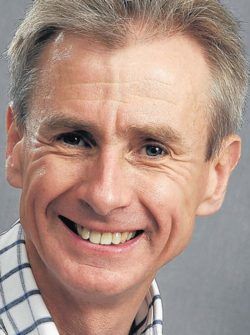Measurement, management and the environment
The first step to reducing our environmental impact as individuals, members of institutions like the NHS, and as a country, is often understanding how large that impact is (and how much smaller it could be).
As temperatures rose to record highs in the UK and northern Europe in July, I found myself considering the scale of my own contribution to the climate emergency. How big is the impact of my lifestyle choices, and professional practice, on the environment?
Let’s start with commuting to work. My home for the last 25 years is 2.5 miles by road to the hospital at which I work. The cycle route is a shorter distance, crossing Southampton Common, and is invariably faster – especially during rush hour. So how much carbon dioxide (CO2) have I not added to the atmosphere by cycling to work?
Five miles a day each week, perhaps 40 weeks of the year – let us say 1,000 miles a year. Over 25 years, that’s 25,000 miles or 40,000km. By commuting in a small car (emitting 150g/km) I would have added an additional six tonnes of CO2 to the atmosphere over the last 25 years.
I was disappointed, only 240kg a year. Given that a tonne of CO2 occupies about 8m3, 240kg would just about fill an average front garden to a depth of 2m. So, instead, I comforted myself with the knowledge of the co-benefits of active travel to health.
Although I’ve been lucky to have been able to avoid high emissions at work, it’s not always easy as the systems in place in our health services and more broadly just aren’t set up for low emissions working and living.
As a trainee anaesthetist in 1985, I recall hearing the suggestion that using nitrous oxide (NO2) in anaesthesia would be history within a generation. Buhre and colleagues, writing in the British Journal of Anaesthesia in May this year, took a different view – it’s still used. While I never need to use nitrous oxide in my own field of anaesthesia, how could it have increased the environmental impact of my professional practice had I not been so fortunate?
Technology has moved on somewhat from the 1980s and when NO2 is used, less is required. But even if I’d been delivering NO2 using current anaesthetic techniques just three days a week for 25 years I would have been responsible for the release of 18,000 litres of it into the atmosphere.
The global warming potential of nitrous oxide is 265-295 times that of CO2. Scaling that up for my own practice, I have saved the equivalent of between 516 and 574 tonnes of CO2. That would be more than enough to fill the front gardens of all the homes on my street up to their roofs.
So, although I’ve been lucky to have been able to avoid high emissions at work, it’s not always easy as the systems in place in our health services and more broadly just aren’t set up for low emissions working and living.
The first step to reducing our environmental impact as individuals, members of institutions like the NHS, and as a country, is often understanding how large that impact is (and how much smaller it could be).
The NGO Health Care Without Harm recently released their calculations of the contribution of the health sector to climate change. It estimated that in the UK it produces the equivalent of 42 megatonnes of CO2 each year – a number that’s rather more difficult to conceptualise in terms of front gardens, but still incredibly important for health professionals to understand.
The adage ‘if you can’t measure something you can’t manage it’ is familiar to many of us in managerial as well as clinical settings. As temperatures fall to seasonal norms, and we have had a foretaste of what life will be like with ‘business as usual’, there has never been a more pressing time for us all to do just that in our home and professional lives – to minimise our environmental impact for the sake of future generations.
Dr Tom Pierce is a Consultant Anaesthetist at University Hospital Southampton and representative of the UK Health Alliance on Climate Change.
The issues raised in this blog will be part of the discussion with Tom at the Melting Pot Lunch on 17 October.
 Tom Pierce15 October 2019
Tom Pierce15 October 2019
